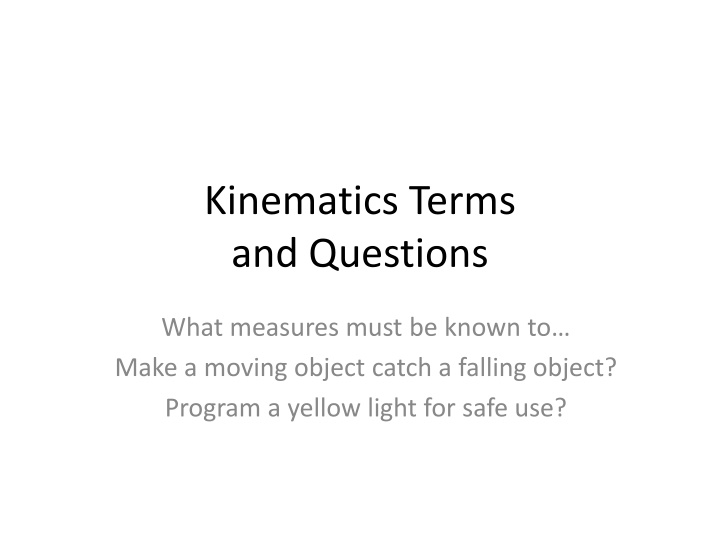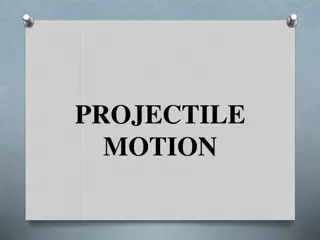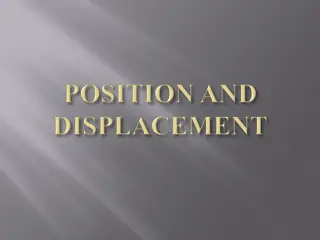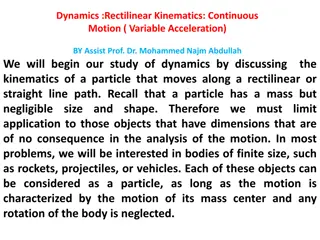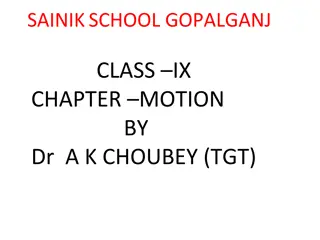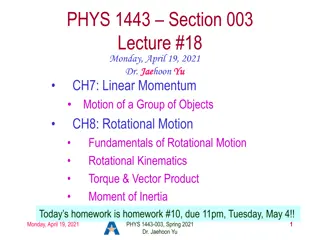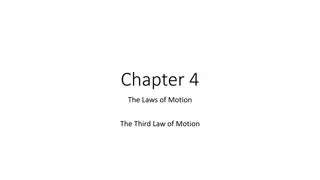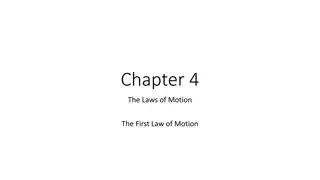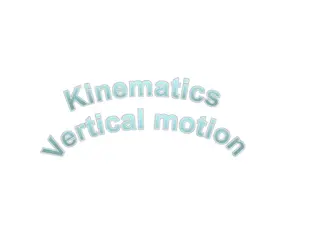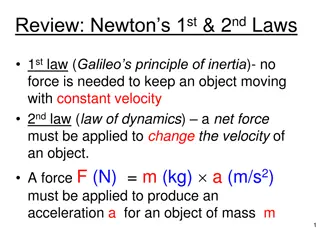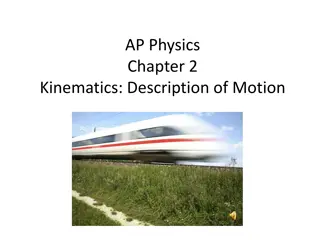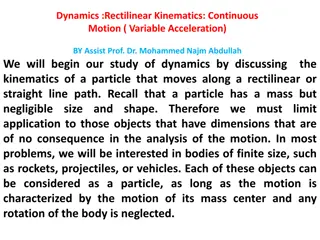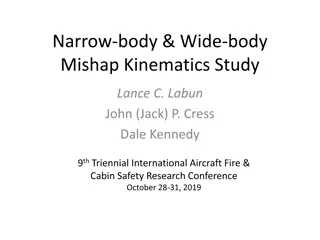Kinematics Terms: Measures for Object Motion
Discover the essential measures required for one object to catch another, program a yellow light for safety, and delve into key kinematics questions such as speed, distance, time, and location. Explore measurement names, kinematics measures, and the difference between time and duration. Uncover the formulas needed for calculations and understand the importance of word webs in organizing vocabulary. Engage in an outcome-based lab to determine a jeep's speed through practical experiments and analyses.
Download Presentation

Please find below an Image/Link to download the presentation.
The content on the website is provided AS IS for your information and personal use only. It may not be sold, licensed, or shared on other websites without obtaining consent from the author.If you encounter any issues during the download, it is possible that the publisher has removed the file from their server.
You are allowed to download the files provided on this website for personal or commercial use, subject to the condition that they are used lawfully. All files are the property of their respective owners.
The content on the website is provided AS IS for your information and personal use only. It may not be sold, licensed, or shared on other websites without obtaining consent from the author.
E N D
Presentation Transcript
Kinematics Terms and Questions What measures must be known to Make a moving object catch a falling object? Program a yellow light for safe use?
(Your) Kinematics Questions (so far) How fast ? How far ? How long ? Where ? When ?
(Your) Kinematics Questions (after editing) - - - - - - when ? - where ? - how long .? - how far does object move? - how far and which way) is object moved from start? - how fast is object moving? - how fast & which way is it moving? - -
Measurement Names -time -duration -position -distance -displacement -speed -velocity -Which of these terms relates two other terms? - - - - - - -
Kinematics Measures - (t) time -(x,y,z) position - where object is/was -( t) duration - how long does (did) motion take -(d) distance - how far object moves -( x)displacement - how far (and which way) object is moved from start - (S) speed - how fast is object moving -(v) velocity - how fast & which way its moving - when
Using word webs (graphic organizer) for vocabulary Word Webs mimic how your brain works Word Webs can be added to Word Webs take LESS time to write than traditional notes, because you write just what you need Ex: duration (see side board)
Outcome Based Lab What is the jeep s speed? Write a lab report on white board. We will race the cars to see if the class s results are accurate. How did we do? How long will it take your jeep to travel 4.0m?
Formulas t = tf to x = xf xo S = d / t v = x / t
Time vs Duration What is the difference? What is the same? Which one must be computed if you use a traditional clock? How do you perform that computation
Distance vs Displacement What is the difference? What is the same? Which measurement matters to a football coach? Which one affects how tired a running back would be at the end of a play? Which one is 1600m when the mile is run at a track meet?
Speed and Velocity What is the difference? What is the same? What formulas are used? What do you call the value if the speed of the object isn t constant?
Distance and Displacement During a practice, athletes start at one end of the gym, sprint to the foul line (15 feet), then back to the end-line, then sprint to the mid- court line (42 feet), then back to the initial end-line, then sprint to the other foul line, then back to the initial end-line, then sprint to the opposite end line. Determine the distance and displacement for each athlete. A diagram of the court would be useful!
Speed vs Velocity Example At a CB South track meet, Pat competes in the 1600m (4 laps of the 400m track). Pat completes the first lap of the race in 60.0 seconds, the second lap in 62.0 seconds, the third lap in 73.0 seconds, and the last lap in 65.0 seconds. In SI units, determine Pat s average speed or average velocity (whichever has relevance in this problem). Now compute the answer in miles per hour.
